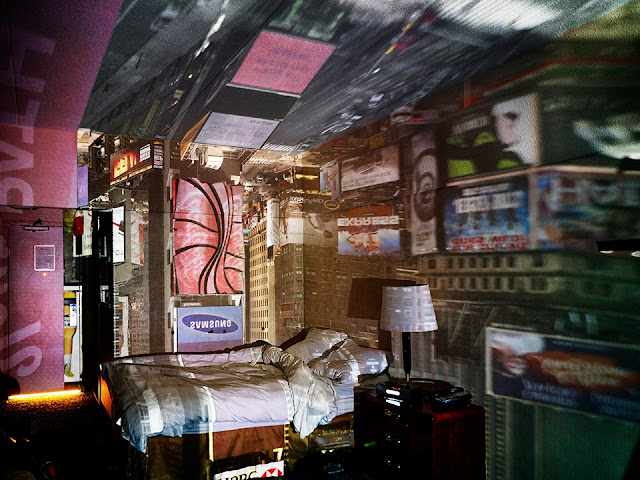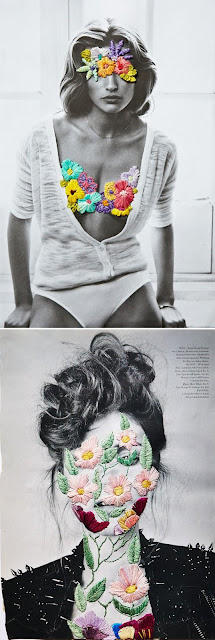John Stezaker
I have chosen to research the photographer John Stezaker because his work includes the transformation of portraits. I like the idea of taking something simple like portraiture and changing it into something original by adding landscape or combining it with a pattern. His work heavily involves either photoshop or physical experiments, both I could get different results from depending on the outcome I want to achieve.
John was born in 1949 and is an English conceptual artist. In John's work he takes classic movie stills, vintage postcards and book illustrations and adds them to old photographs to give them a new meaning. His work is sometimes used to put across his own opinion using whitty photographs that could indicate a message.

This first image is from the collection of photographs called 'Marriage'. This series of image shows two faces being put together to create a new face that looks slightly strange and comical. The reason it is titled marriage is because the faces that have been put together are husband and wife, mirroring each others facial features at roughly the same scale and feature placement. I think that the image above is quite powerful, both husband and wife have the same poignant look on their face despite the photos being taken separately. This could show the connection in personality between the two characters as they both glare at the camera in the same way. As you can tell from the colouring and slight graininess of the photos they are quite old fashioned, this suggests to me that John Stezaker might not have actually taken the images but perhaps possessed them from people he knew, then worked with the to produce his own style.

This photograph is from the collection titled 'Old Mask'. From first look we can see that this is a portraiture image that has been partially covered by a landscape image of arches. It is quite possible that the portrait images has been taken by John Stezaker himself as it is of an old man in black and white, something that could be easily produced. The landscape photograph in front however seems to look very old fashioned, especially because of the colour of it, it has a slight yellow tint perhaps from ageing. I believe that perhaps the landscape and the person in the portrait have a significant connection, somewhere the person likes to visit as this would bring meaning and context to the photograph. Overall, I like the image as it has many different possibilities as to why it is set out this way dependant on the person viewing the photo.

The image above displays a young lady with a very colourful landscape covering the majority of her face. The reason this image stood out to me was because of the colour shown in the landscape, something that a lot of John's work doesn't show. This stands out against the black and white portrait bringing life and a little bit of modernity into the image. To me the fact that John hash; covered the ladies mouth and we can see a slight part of her smile is because he wanted to show the expression she had. Giving her character not just the background that can be overlooked. Again I think perhaps that the location that has been placed n her face may hold some significance to her, not just two images that have been randomly placed together. Overall, I think the photograph is very interesting and certainly transforms normal portraiture or landscape. This is something I definitely want to try in my own work.

Lastly I chose this photograph by John Stezaker. Similar to the last image it includes a landscape photograph with colour that juxtaposes the black and white image below, making the image come alive. However, what is different about this photograph is that the ladies face and upper body is mostly covered by the landscape, leaving nothing to be seen about her expression. From the way the lady is sitting and dressed it almost appears to be a model posing for a magazine cover. Therefore perhaps John Stezaker has covered most of her face due to the fact that the people we see in magazines are staged, the expression they have is what they are told to do so don't show any personality. I believe that by doing the same but with a landscape could be playing on the way the media portrays some models.
Influence
I have tried John Stezakers style of work by putting both portraiture work and 'natural' photography together. I shot some images of a subject and some at Kew Gardens so that I could create the 'masked' images like he does. John's work was one of my initial ideas however I did not continue with his work after my experimentation as I went down the route of camera obscura. Below are some of the photographs I produced in his style -
The images are extremely similar in appearance and concept however I did choose to only cover the yes of my subjects, making my masks much smaller. I decided to do this because I liked the effect of having the subjects mouth in the photo in order to show some form of expression.























































